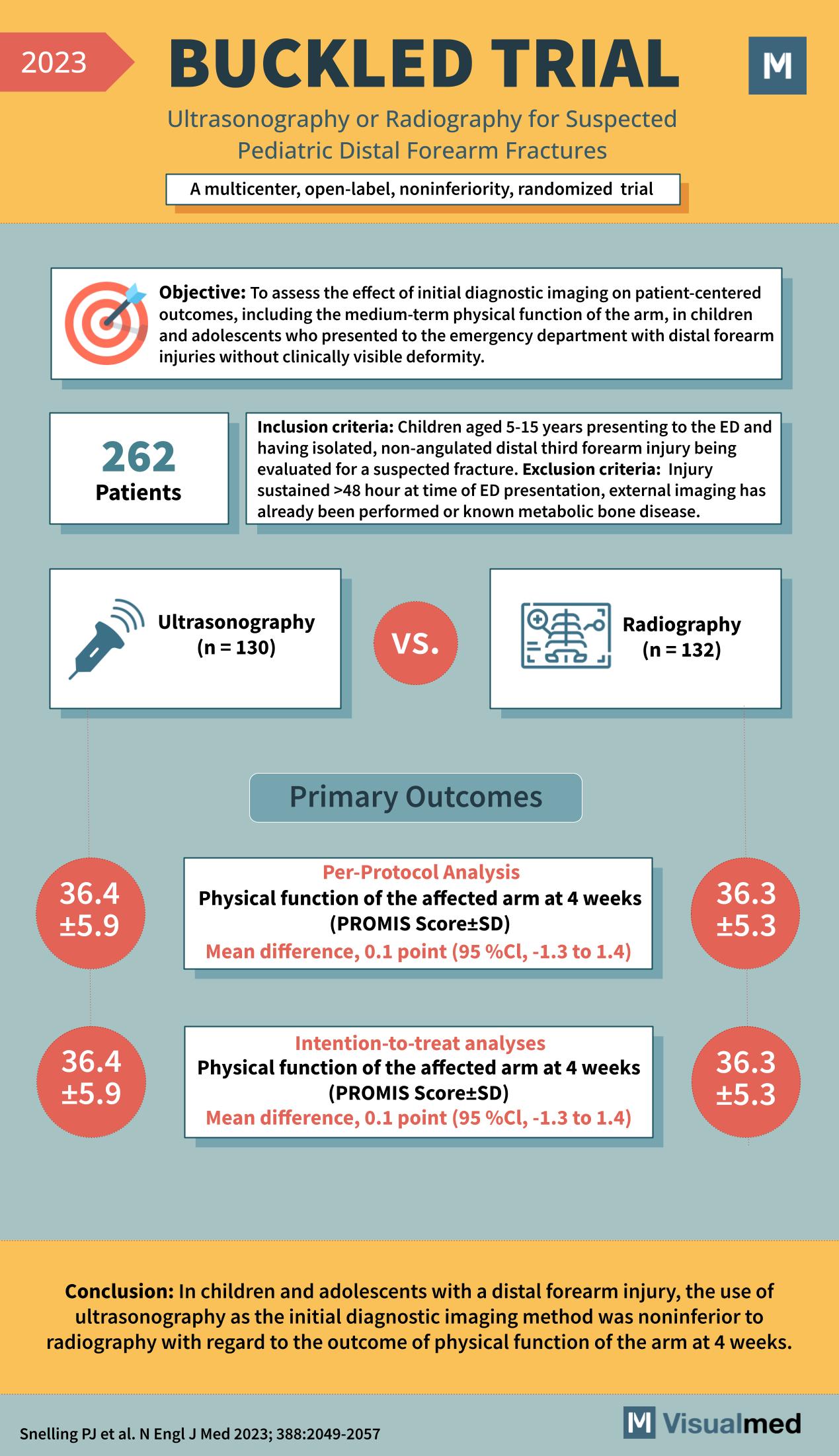
The BUCKLED Trial: Ultrasound vs. Radiography in Pediatric Forearm Fractures
In 2023, the BUCKLED Trial offered a novel perspective on diagnosing pediatric distal forearm fractures. This multicenter, open-label, noninferiority, randomized trial investigated whether ultrasonography could stand as a viable alternative to traditional radiography for this common pediatric emergency.
Objective of the BUCKLED Trial
The trial sought to assess the impact of initial diagnostic imaging on patient-centered outcomes, particularly focusing on the medium-term physical function of the arm in children and adolescents presenting to the emergency department with distal forearm injuries and no visible deformity.
Participants and Inclusion Criteria
A total of 262 patients between the ages of 5 and 15 years who presented with isolated, non-angulated distal third forearm injuries were enrolled. The study excluded any injury sustained for more than 48 hours prior to presentation, previous external imaging, or known metabolic bone disease.
Comparative Methods of the BUCKLED Trial
The participants were divided into two groups: 130 underwent ultrasonography, and 132 received radiography to assess the injury.
Results of the BUCKLED Trial
Primary Outcomes
- Both per-protocol and intention-to-treat analyses showed a mean difference of 0.1 point (95% CI, -1.3 to 1.4) in the physical function of the affected arm at 4 weeks, as measured by the PROMIS score, between the ultrasonography group (36.4 ± 5.9) and the radiography group (36.3 ± 5.3).
Conclusion and Implications for Clinical Practice
The BUCKLED Trial concluded that in children and adolescents with a distal forearm injury, the use of ultrasonography as the initial diagnostic imaging method was noninferior to radiography concerning the outcome of physical function of the arm at 4 weeks. These findings have significant implications for emergency medicine, offering a potential shift toward more widespread use of ultrasound in pediatric fracture diagnosis, possibly enhancing patient comfort and reducing exposure to radiation.